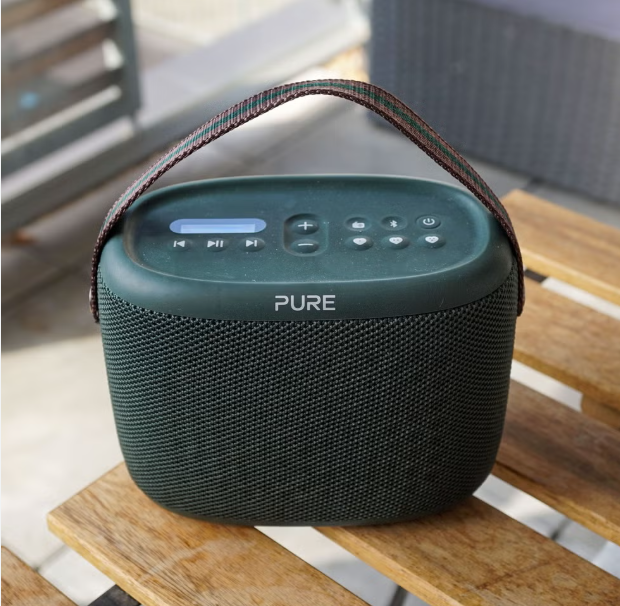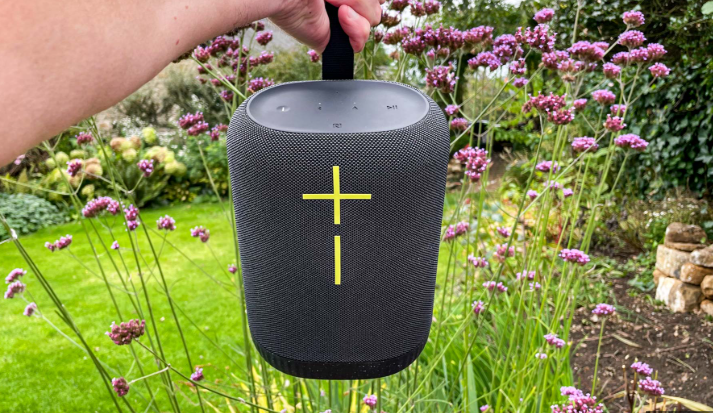When it comes to selecting the best Bluetooth speaker 2025, the choice between a portable Bluetooth speaker and a stationary Bluetooth speaker hinges on how and where you plan to enjoy your music. Whether you’re a frequent traveler needing a compact audio companion or a homebody craving room-filling sound, understanding the strengths of each type is crucial. This comprehensive guide dives into the portable vs stationary Bluetooth speaker debate, highlighting top models, key features, and practical advice on Bluetooth speaker setup, maintenance, and more. With 2025’s cutting-edge audio innovations, you’ll find the perfect best Bluetooth speaker guide to elevate your listening experience, no matter your lifestyle.
Why Portable vs Stationary Bluetooth Speaker Matters in 2025
In 2025, Bluetooth speaker technology has evolved to offer unprecedented versatility, with advancements like Bluetooth 5.3, extended battery life, and smart integrations transforming how we interact with audio. A portable Bluetooth speaker is designed for mobility, perfect for outdoor adventures or spontaneous gatherings, while a stationary Bluetooth speaker prioritizes power and sound quality for home environments. Both leverage stable connectivity and durable builds, but their use cases differ significantly.
The best Bluetooth speaker 2025 depends on your needs: portability for on-the-go tunes or stationary power for immersive home audio. With features like IP67 waterproofing, AI-driven sound tuning, and eco-friendly materials, these devices cater to diverse preferences. This guide will explore their differences, offer Bluetooth speaker tips for optimal use, and provide insights on how to use a Bluetooth speaker effectively. For more detailed comparisons, check out our audio guide.
Portable Bluetooth Speaker: Freedom to Roam
A portable Bluetooth speaker is built for mobility, offering lightweight designs and rugged durability for life on the move. These compact devices are ideal for travelers, hikers, or anyone who wants music anywhere, anytime.
Pros of Portable Bluetooth Speakers
- Compact and Lightweight: Weighing under 2 pounds, models like the JBL Clip 5 clip to bags or belts, making them ultra-portable.
- Battery-Powered: Most offer 10-20 hours of playtime, with some like the Tribit StormBox Flow hitting 30 hours.
- Durability: IP67 or IP68 ratings ensure resistance to water, dust, and drops, perfect for outdoor use.
- Affordability: Many high-quality options start under $100, delivering value for casual users.
Cons of Portable Bluetooth Speakers
- Limited Sound Output: Smaller drivers mean less bass and volume compared to stationary models, better for personal or small-group listening.
- Fewer Features: Limited space restricts advanced controls or smart integrations in some models.
Best Portable Bluetooth Speaker 2025: JBL Clip 5
The JBL Clip 5 is a standout portable Bluetooth speaker in the best Bluetooth speaker 2025 lineup. Weighing just 0.6 pounds with a built-in carabiner, it’s perfect for hikes or bike rides. Its IP67 rating withstands submersion, and the 12-hour battery ensures all-day playback. Despite its size, it delivers crisp sound with punchy bass via a 40mm driver.
For how to use a Bluetooth speaker, press the Bluetooth button until the LED flashes, then pair via your device’s settings. The JBL app offers EQ tweaks for customization. This portable Bluetooth speaker is a top choice for adventurers seeking compact, reliable audio.

Stationary Bluetooth Speaker: Powerhouse Audio for Home
A stationary Bluetooth speaker is designed for home or fixed settings, delivering robust sound and advanced features to fill large spaces. These are ideal for parties, home theater setups, or dedicated listening rooms.
Pros of Stationary Bluetooth Speakers
- Superior Sound Quality: Larger drivers and higher wattage (up to 100W) produce deep bass, clear vocals, and high volumes for immersive audio.
- Advanced Features: Models like the Bose SoundLink Max offer smart integrations, multi-room syncing, and app-based controls.
- Versatile Connectivity: Bluetooth, Wi-Fi, and AUX inputs allow seamless integration with home systems.
- Longevity: Built for stability, these often include durable materials and sometimes AC power for uninterrupted use.
Cons of Stationary Bluetooth Speakers
- Limited Portability: Weighing 5-15 pounds, they’re cumbersome for travel and often require power outlets.
- Higher Cost: Premium sound and features push prices from $150 to over $500.
Best Stationary Bluetooth Speaker 2025: Bose SoundLink Max
The Bose SoundLink Max is a top stationary Bluetooth speaker in the best Bluetooth speaker 2025 category. With stereo drivers and a 20-hour battery (or AC option), it delivers room-filling sound with deep bass and crystal highs. Its IP67 build adds durability, while the Bose app supports EQ tuning and multi-device pairing.
Setup is simple: hold the Bluetooth button and connect via your device. For home use, position in corners to amplify bass. While semi-portable, it excels as a stationary Bluetooth speaker for parties or home audio systems. Explore more at maintenance tips.

Portable vs Stationary Bluetooth Speaker: Key Comparison Points
Choosing between a portable vs stationary Bluetooth speaker depends on your priorities. Here’s a breakdown to guide your decision:
- Sound Quality: Stationary speakers dominate with larger drivers for richer bass and higher volumes, ideal for large rooms or events. Portable models suit personal or small-group use but may lack depth at max settings.
- Portability: Portable speakers are lightweight and battery-powered, perfect for travel. Stationary ones are bulkier, often needing outlets, limiting mobility.
- Battery Life: Portables average 10-30 hours; stationary models may rely on AC or offer 15-20 hours for occasional moves.
- Price: Portables start at $50, while stationary speakers range from $150-$500 for premium performance.
- Use Case: Choose portable for outdoor adventures, commutes, or casual use. Opt for stationary for home entertainment, parties, or audiophile setups.
How to Use a Bluetooth Speaker: Setup for Portable and Stationary Models
Mastering how to use a Bluetooth speaker is straightforward for both types. For Bluetooth speaker setup, charge portables fully (2-4 hours via USB-C) or plug in stationary models. Power on, press the Bluetooth button until the LED flashes, and pair from your device’s Bluetooth menu.
For portables, keep within 30-50 feet to avoid drops; stationary speakers benefit from Wi-Fi for multi-room setups. Apps enhance both—use for EQ, firmware, or stereo pairing. Elevate portables for sound dispersion; place stationary ones near walls for bass boost. These steps ensure seamless integration, whether at home or on the go.
Bluetooth Speaker Troubleshooting: Fixes for Portable and Stationary
Bluetooth speaker troubleshooting keeps both types running smoothly. Pairing issues? Restart devices, clear Bluetooth lists, and reconnect within range. For portables, choppy audio often means interference—move closer. Stationary speakers may overheat at max volume; lower to 70%.
Battery drain on portables? Power off when idle. Stationary models with LEDs (like JBL PartyBox) save energy by dimming via app. Distortion? Adjust EQ or reduce volume. Reset both by holding power and Bluetooth buttons for 10 seconds. Regular Bluetooth speaker troubleshooting maintains performance.
Bluetooth Speaker Cleaning and Maintenance: Care for Both Types
Proper Bluetooth speaker cleaning extends the life of your best Bluetooth speaker 2025. Use a dry microfiber cloth for exteriors; avoid liquids near ports, especially on stationary models without waterproofing. Brush grilles gently for dust; use compressed air for crevices.
Bluetooth speaker maintenance includes storing portables in padded cases and stationary speakers in cool, dry spots. Charge portables to 80% for storage; update firmware monthly via apps. Clean contacts with minimal isopropyl alcohol. These Bluetooth speaker tips ensure durability for both types.
Bluetooth Speaker Safety: Precautions for Portable and Stationary
Bluetooth speaker safety applies universally. For portables, secure clips or straps to prevent drops during travel. Stationary speakers need stable surfaces to avoid falls, especially during parties. Keep both away from water unless IP-rated.
Use at 60-70% volume to protect hearing and drivers. Avoid extreme heat to prevent battery damage. Supervise kids around small parts. These habits make your portable Bluetooth speaker or stationary model safe and reliable.
Bluetooth Speaker Tips: Optimizing Portable and Stationary Performance
Maximize your best Bluetooth speaker 2025 with these Bluetooth speaker tips. For portables, place centrally for 360-degree sound; elevate for clarity. Stationary speakers benefit from corner placement to enhance bass via wall reflection.
Use apps for EQ tweaks—boost mids for podcasts on portables, bass for music on stationary. Pair portables for stereo; link stationary models for multi-room audio. Pack portables in padded cases for travel; ensure ventilation for stationary ones. These tweaks elevate your Bluetooth speaker experience.
Conclusion: Portable vs Stationary Bluetooth Speaker—Find Your Perfect Match
The portable vs stationary Bluetooth speaker choice comes down to your lifestyle. A portable Bluetooth speaker like the JBL Clip 5 offers freedom for adventurers, with compact size and rugged durability. A stationary Bluetooth speaker like the Bose SoundLink Max delivers powerful, immersive audio for home enthusiasts.
With proper Bluetooth speaker setup, routine Bluetooth speaker cleaning, and proactive Bluetooth speaker troubleshooting, either choice will shine. Explore detailed reviews and tips in our best Bluetooth speaker guide to find your ideal best Bluetooth speaker 2025. Pick your match and let the music play!